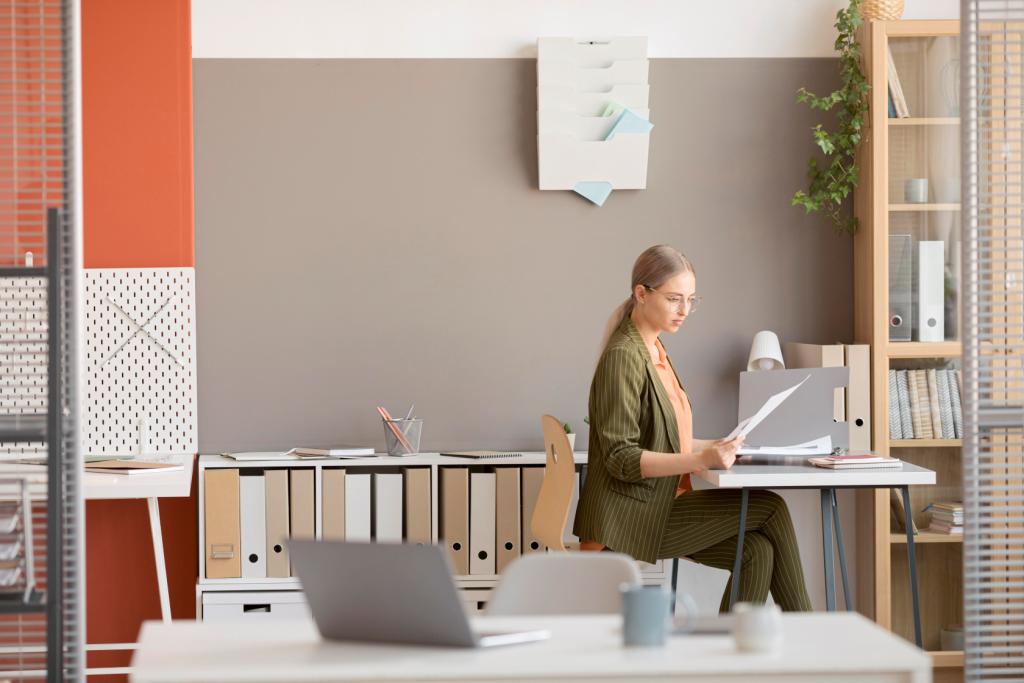If you keep wondering why your employees appear distracted or their productivity seems to be dropping, rather than assigning blame, turn your attention to the environment they work in. When files are scattered, desks and chairs are all over the place, and there’s hardly any open space, they may be struggling with decreased productivity due to office clutter. Surprisingly, research from the University of California reveals that we spend an average of just 12 minutes on a task before being interrupted. What’s more concerning is that it takes us over 25 minutes to regain our focus.
These distractions can come in various forms, both personal and external. Personal distractions include feeling mentally drained, constant phone notifications, or the lure of social media. External distractions are often caused by poor office layout or the actions of colleagues.

In today’s fast-paced world, where our workplaces have become the centre of our daily lives, creating an environment that supports concentration and efficiency is crucial. The chaotic mess of a disorganised office doesn’t just disrupt our workflow; it also steals our valuable time. Every moment lost to disarray is a moment lost to progress.

In this context, eliminating daily workplace distractions becomes an imperative mission. With that in mind, let’s explore some simple ways to design a minimalist office that fosters focus and productivity.
1. Start with a Clean Slate
Before you can create a minimalist workspace, you need to declutter. Begin by removing all unnecessary items from your office. Be ruthless in your approach. Ask yourself if an item is essential or serves a specific purpose. If it’s not serving your needs, it is time to let it go.
2. Prioritise Functionality
Minimalism is about focusing on what truly matters. When designing your office, prioritise functionality. Identify the core functions of your workspace, such as your primary tasks and tools. For instance, if you’re a financial institution, your primary functions include managing client accounts, conducting financial analysis, and ensuring data security. Your workspace should be tailored to support these essential functions.
3. Invest in Quality Furniture
Selecting the right furniture is crucial for a minimalist office. Choose high-quality, multi-purpose furniture that serves your needs without overwhelming the space. A simple, ergonomic desk and a comfortable chair are often sufficient. Keep the colour palette neutral to maintain a clean, uncluttered look.
4. Streamline Your Technology
Reduce visual distractions by organising your technology. Tuck away cables and wires, and keep your computer and accessories neatly organised. A minimalist office design promotes simplicity, and this extends to your technology setup. Furthermore, go digital with your paperwork. Scan and digitise documents, and use digital filing systems. This saves physical space and simplifies the retrieval of important documents.
5. Opt for Open Shelving
Consider open shelving units to store essential items like books, reference materials, or decorative items. Open shelves provide easy access to your needs while maintaining a sleek and airy appearance. Make sure to keep the shelves tidy and organised.
6. Measure and Plan
Measure your space and plan designated areas for different groups of items. Ensure walkways are clear and everything is easily accessible. The goal is to create a workspace that’s well-organised and efficient.
7. Biophilic Design
Incorporate elements of biophilic design into your workspace. This includes the use of natural materials, plants, and natural light. Biophilic design can have a calming effect and promote a sense of well-being in your office.
8. Colour Palette
Choose a neutral and calming colour palette for your workspace. Neutral colours like white, beige, and light grey can create a serene atmosphere, reducing visual clutter and distractions.
9. Label Everything
Organisation is vital to minimalism. Label storage containers, shelves, and drawers to ensure everything has its place. This keeps your office neat and helps you quickly locate items when needed.
10. Adjust as Needed
Remember, setting up your workspace isn’t a one-time task. Live in the space, work in it, and make adjustments as you go. The key is making the space so familiar that you can find things without thinking about it.
Conclusion
Minimalism is an ongoing process. Your workspace is a constant work in progress, evolving with your needs. Remember to adjust and refine your system on the go. By implementing these principles, you can create a minimalist office design that will help maintain a clutter-free workspace, promoting productivity and peace of mind.

Shared By: Sammeer Pakvasa,
Managing Director and CEO- Eleganz Interiors




